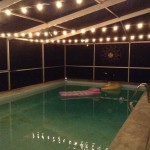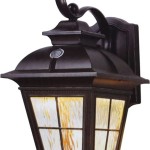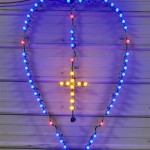Outdoor Photography Light Setup: Mastering Natural and Artificial Light
Outdoor photography presents unique challenges and opportunities related to lighting. Unlike studio photography, where light is meticulously controlled, outdoor photography relies heavily on ambient light conditions, which vary considerably throughout the day and across different weather scenarios. Successfully capturing compelling outdoor images requires a comprehensive understanding of how natural light behaves and how to effectively supplement or modify it with artificial light sources. This article will explore key considerations for outdoor photography light setups, encompassing the effective utilization of natural light, the integration of artificial light sources, and techniques for achieving optimal exposure and creative effects.
Understanding and Utilizing Natural Light
Natural light, primarily sunlight, is the foundation of most outdoor photography. Its characteristics change dramatically based on the time of day, weather conditions, and geographical location. A thorough understanding of these variations is crucial for planning and executing successful outdoor shoots.
The "golden hour," occurring shortly after sunrise and shortly before sunset, is widely celebrated among photographers for its warm, soft, and diffused light. During these periods, the angle of the sun is low, resulting in longer shadows and a flattering illumination of subjects. This soft light minimizes harsh highlights and deep shadows, creating a visually pleasing aesthetic that is ideal for portraiture, landscapes, and architectural photography.
The "blue hour," which occurs just before sunrise and just after sunset, provides a cool, ethereal light that is particularly well-suited for landscape and cityscape photography. The soft, ambient light during this period produces rich colors and subtle gradients, enhancing the mood and atmosphere of the scene. It's important to use a tripod during the blue hour, as the low light conditions necessitate longer exposure times.
Midday sun, often considered the most challenging light to work with, is characterized by its harsh, direct nature. It can create strong shadows and washed-out highlights, making it difficult to capture images with balanced exposure. However, midday sun can still be used creatively. Photographers can seek out shaded areas to soften the light, use reflectors to bounce light into shadowed areas, or embrace the contrast for dramatic black and white conversions. Under overcast conditions, the sun is diffused by cloud cover, resulting in soft, even light that is excellent for portraiture and product photography. The absence of harsh shadows simplifies the process of achieving balanced exposure.
Beyond the time of day, the direction of the light also plays a pivotal role. Front lighting illuminates the subject directly from the front, minimizing shadows and revealing detail. However, it can also flatten the subject and reduce depth. Side lighting, illuminating the subject from the side, creates shadows and highlights that emphasize texture and form. This is particularly useful for landscape and architectural photography. Backlighting, where the light source is behind the subject, can create dramatic silhouettes or a soft, ethereal glow, depending on the exposure settings and subject positioning. Rim lighting, a variation of backlighting, creates a bright outline around the subject, separating it from the background.
Integrating Artificial Light Sources
While natural light is often sufficient, incorporating artificial light sources can significantly enhance outdoor photography, providing greater control over exposure, fill in shadows, and add creative effects. Portable flashes and strobes are common tools for augmenting natural light, offering flexibility and power in various scenarios.
On-camera flashes, while convenient, can often produce harsh, unflattering light. Off-camera flashes, controlled via radio triggers, offer greater flexibility in terms of light placement and direction. By positioning the flash away from the camera, photographers can create more natural-looking shadows and highlights, avoiding the flat, two-dimensional appearance often associated with on-camera flash. Softboxes and umbrellas are frequently used to diffuse the light from flashes, creating softer, more even illumination. These modifiers increase the size of the light source, resulting in softer shadows and a more pleasing aesthetic.
Reflectors are an indispensable tool for outdoor photography. They are used to bounce sunlight or artificial light into shadowed areas, reducing contrast and filling in details. Reflectors come in various sizes and colors, each offering unique effects. White reflectors provide a neutral, diffused light, while silver reflectors offer a brighter, more specular reflection. Gold reflectors add a warm tone to the light, which can be flattering for portraits. Black reflectors, also known as flags, are used to block light, creating deeper shadows and increasing contrast. They are particularly useful for controlling light spill and shaping the light on the subject.
Continuous LED lights are another valuable option for outdoor photography, especially for video work. These lights provide a constant source of illumination, allowing photographers to see the effect of the light in real time. LED panels are available in various sizes and color temperatures, offering flexibility and convenience. Battery-powered LED lights are particularly useful for location shoots where access to power outlets is limited.
When using artificial light, it is essential to consider the color temperature of the light source. Matching the color temperature of the artificial light to the ambient light is crucial for achieving a natural-looking result. Most flashes and LED lights offer adjustments for color temperature, allowing photographers to fine-tune the light to match the scene. Using a color meter can help to accurately measure the color temperature of the ambient light and set the artificial light accordingly.
Techniques for Achieving Optimal Exposure and Creative Effects
Achieving optimal exposure in outdoor photography requires careful consideration of the camera's settings, including aperture, shutter speed, and ISO. Understanding the exposure triangle and how these settings interact is crucial for capturing well-exposed images.
Aperture controls the amount of light entering the camera lens and affects the depth of field. A wide aperture (e.g., f/2.8) allows more light to enter the camera, resulting in a shallow depth of field, where the subject is in focus and the background is blurred. This is ideal for portraiture, where the goal is to isolate the subject from the background. A narrow aperture (e.g., f/16) allows less light to enter the camera, resulting in a deep depth of field, where everything from the foreground to the background is in focus. This is ideal for landscape photography, where the goal is to capture detail throughout the entire scene.
Shutter speed controls the length of time that the camera's sensor is exposed to light. A fast shutter speed (e.g., 1/1000 second) freezes motion, while a slow shutter speed (e.g., 1 second) blurs motion. Fast shutter speeds are used for capturing action shots, such as sports or wildlife photography. Slow shutter speeds are used for creating motion blur effects, such as capturing the movement of water or clouds. Using a tripod is essential when using slow shutter speeds to prevent camera shake.
ISO controls the sensitivity of the camera's sensor to light. A low ISO (e.g., ISO 100) results in a cleaner image with less noise, while a high ISO (e.g., ISO 3200) results in a brighter image but with more noise. It is generally recommended to use the lowest ISO possible to minimize noise and maximize image quality. However, in low-light situations, it may be necessary to increase the ISO to achieve a properly exposed image.
Beyond the exposure triangle, understanding metering modes is crucial for achieving accurate exposure. Evaluative metering, also known as matrix metering, analyzes the entire scene and calculates an exposure based on the average brightness. Spot metering measures the light from a small area of the scene, allowing photographers to precisely control the exposure of a specific subject. Center-weighted metering measures the light from the center of the scene, giving more weight to the area in the middle of the frame. Experimenting with different metering modes and understanding their strengths and weaknesses is essential for achieving optimal exposure in various lighting conditions.
Indoor Outdoor Lighting Setups Simple Diagrams For Learning Photography

Pin By David Casimer On Photography Ideas Lighting Setup Portrait Studio

8 Invaluable Tools For Outdoor Photographers On A Sunny Day B H Explora

Allison Shelby Lighting Work Setup Dramatic Photography Photo Light

How To Mix Ambient Light And Fill Flash For Outdoor Portraits

Photography Lighting Tips Create A Photo Studio Anywhere

A Quick Simple And Basic One Light Outdoor Photography Tutorial

Lighting Set Ups Portrait Photography Essentials Outdoor

11 Outdoor Portrait Photography Tips For Easy Shots

Sunset Portrait Strobist Setup Lighting Scheme 54ka Photo Blog
Related Posts







